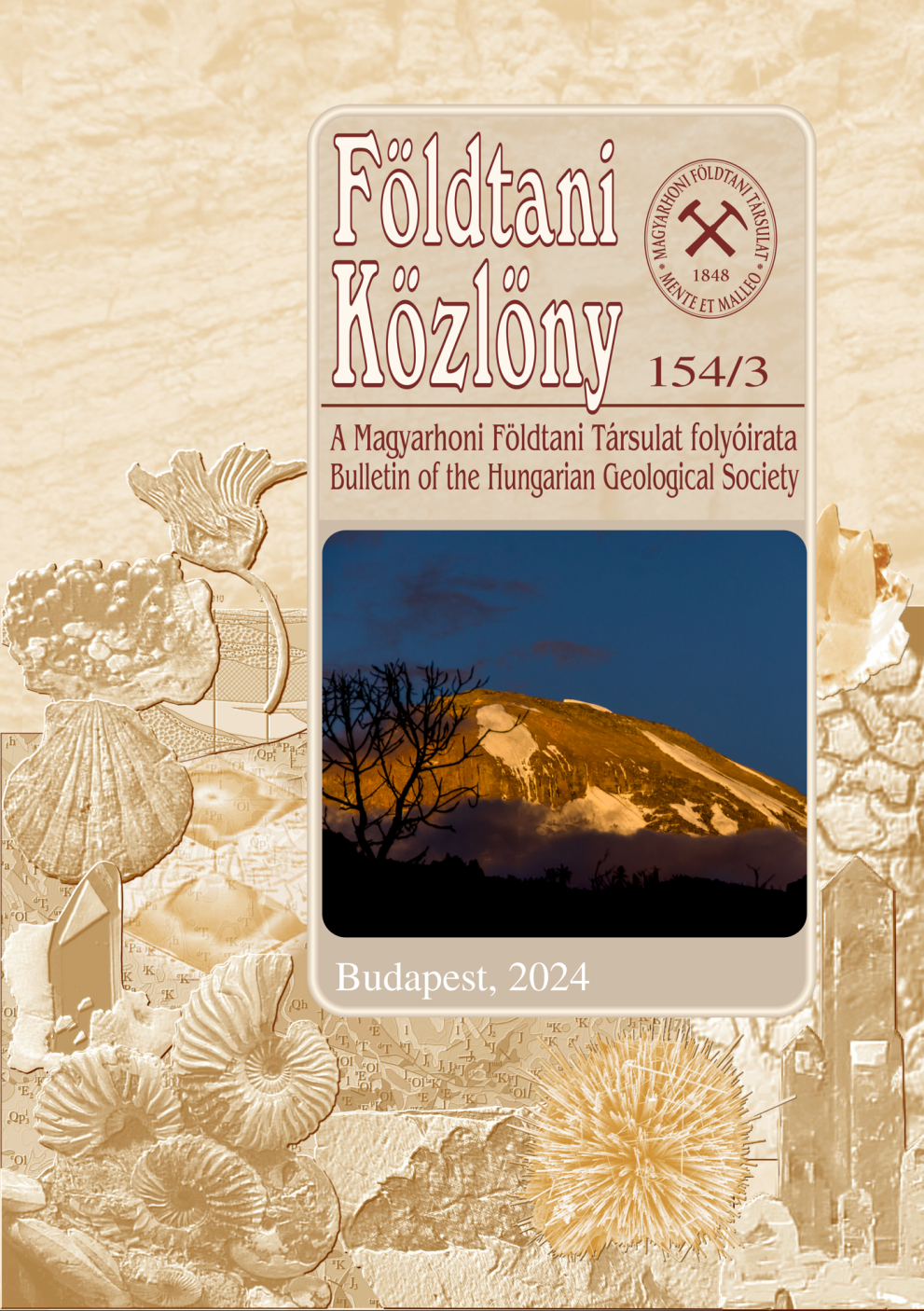Reconstruction of Late Miocene – Pliocene rivers in south-eastern foreland of the Vértes Hills
Abstract
During Late Miocene to Pliocene times, following the gradual infill of Lake Pannon, a widespread alluvial plain was
formed throughout the Pannonian Basin, depositing a thick alluvial succession over large areas. The outcrops of these
deposits, however, can only be seen at a few locations, chiefly along the rims of the recent mountainous areas. In this
paper, the Late Miocene to Pliocene fluvial sedimentary environments are reconstructed on the basis of field
observations taken in several outcrops in the south-eastern foreland of the Vértes Hills, a part of Transdanubian Range.
Due to poor outcrop conditions, the field observations were supplemented with borehole data and electrical resistivity
ground imaging; the latter is a geophysical method recently introduced for applications in fluvial sedimentology.
Besides some silt and mud, it is mainly trough, cross-stratified sand that has been deposited in the ancient fluvial
channels which appear in the outcrops. Boreholes and geoelectric profiles, however, prove that the bulk of the alluvial
deposits consists of floodplain silt and mud that surrounds isolated channel sandbodies. In most of the reconstructed
channels, the sedimentary accretions are mainly vertical, demonstrating the lateral stability of the channel paths. Signs
of point bar formation (lateral accretion) were recognized at only one location. This palaeoenvironment is very similar to
the facies model of anastomosing rivers, although the presence of coexisting interconnected channels cannot be proven
in the case considered here. From one of the studied outcrops, a large-scale planar cross-bedded sand is described, and
this has been interpreted as the sediment of a braided channel.
The measured palaeocurrents and the orientation of a channel sandbody mapped in 3D from geoelectric profiles indicate
that the Latest Miocene to Pliocene rivers of the study area flowed chiefly from north-west to south-east, across an alluvial
plain with a very gentle slope. The very flat palaeotopography is suggested by the presence of laterally stable channels with
low sinuousity. However, structural activity could have resulted in significant alternations of flow direction and river form
in certain locations, even creating a braided channel in the vicinity of a presumed synsedimentary fault. The maximum depth
of the ancient channels was probably 4 to 7 m, on the basis of the size of bedforms visible in the outcrops. This supports the
assumption that the Late Miocene to Pliocene alluvial sediments of the Vértes foreland were deposited by rivers significantly
smaller than the recent Danube. Palaeoflow directions and magnitudes of the channels suggest that these rivers drained only
the Western Carpathians, located 150–250 km west and north of the study area.











